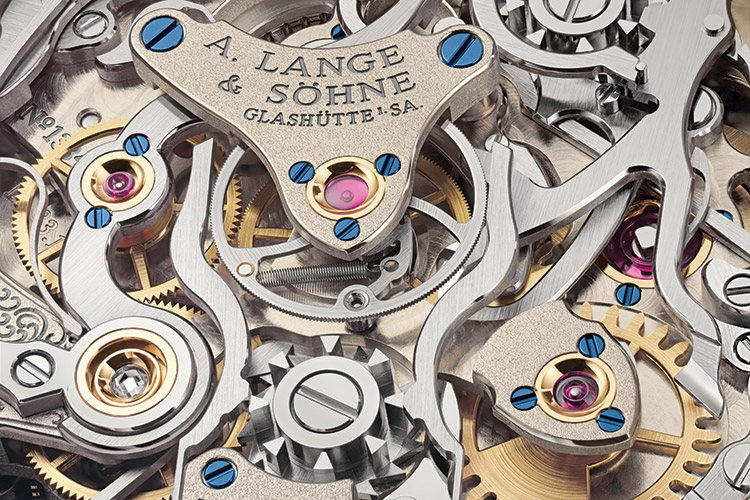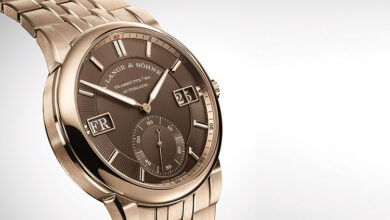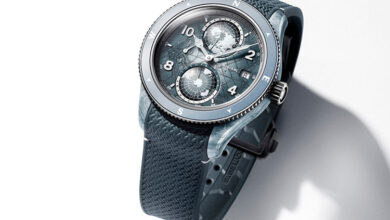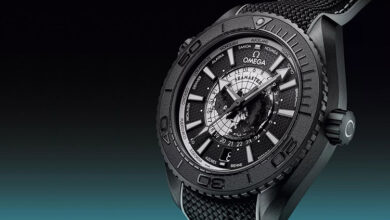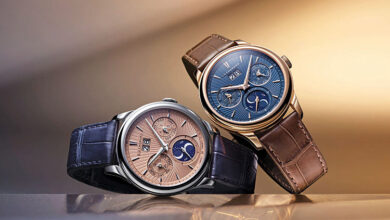A. Lange & Söhne pays Homage to F. A. Lange in honey gold
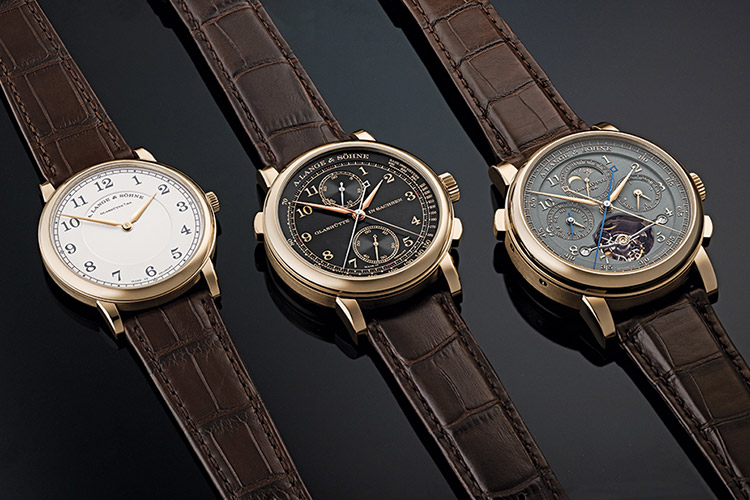
Saxony watchmaker A. Lange & Söhne presented three extraordinary models of the 1815 watch family with the epithet “Homage to F. A. Lange” at the Watches & Wonders event in Shanghai recently
The three limited editions with cases made of exclusive honey gold as well as special movement decorations and dials are dedicated to Ferdinand Adolph Lange. In establishing his manufactory 175 years ago, the watchmaking pioneer laid the foundations for Saxony’s precision watchmaking industry.
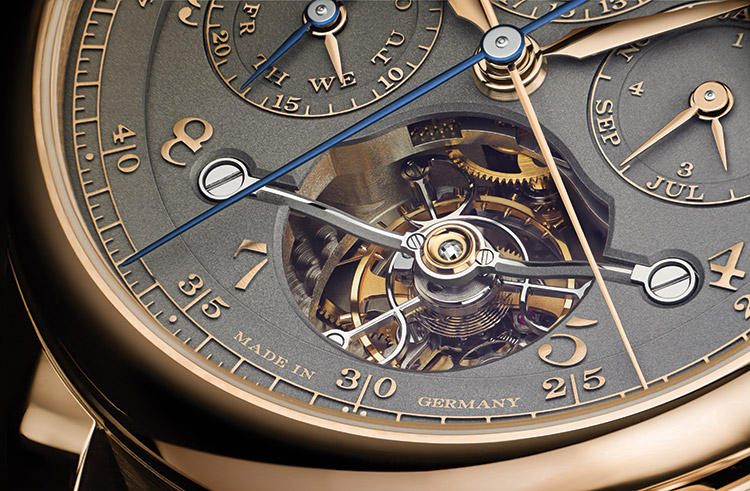
The 1815 watch family, which bears the birth year of Ferdinand Adolph Lange, is inspired by tradition and therefore primarily stands for the classic side of A. Lange & Söhne. The family’s design transports the spirit of the pocket watches of yesteryear to the mechanical wristwatches of today – distinguished restraint and the demand for precision represent the values of Ferdinand Adolph Lange. The unifying element of the three new limited editions is the innovative case material, honey gold. Additionally, all three models stand out thanks to their special movement decorations, which include grained plates made of German silver and black-rhodiumed engravings on the balance cock. Each of the three watches also features a special dial.
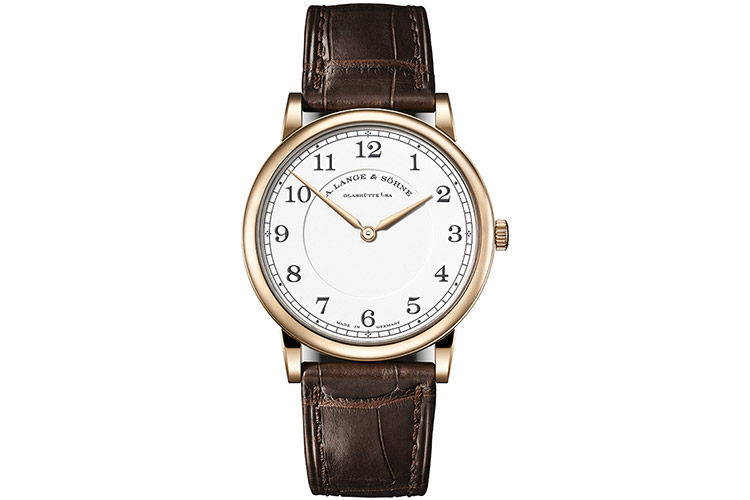
1815 Thin Honeygold
Limited to just 175 watches, and with a diameter of only 38 millimetres, this timelessly elegant two-hand watch is a mere 6.3 millimetres high. With Arabic numerals and a railway-track minute scale, the intricately hand-made enamel dial emphasises the design inspired by Lange pocket watches. The brilliant white, two-part enamel dial stands out prominently in this exclusive framework. The dark-grey printed Arabic numerals and the classic railway-track minute scale contrast well against the bright background. The L093.1 manufacture calibre of the 1815 Thin Honeygold is a modern interpretation of Lange’s product philosophy. With a power reserve of 72 hours, the 2.9-millimetre-high manually wound movement proves that compact dimensions and performance are not mutually exclusive. The freely oscillating Lange balance spring has a frequency of 21,600 semi-oscillations per hour. In combination with a classic screw balance, it assures optimised rate accuracy.
1815 Rattrapante Honeygold
This watch places the classic complications of timekeeping – chronograph and rattrapante – in the spotlight. A limited edition of 100 pieces and exclusively available in A. Lange & Söhne boutiques, the rattrapante chronograph features a case in honey gold, a black dial, and special movement finissage.
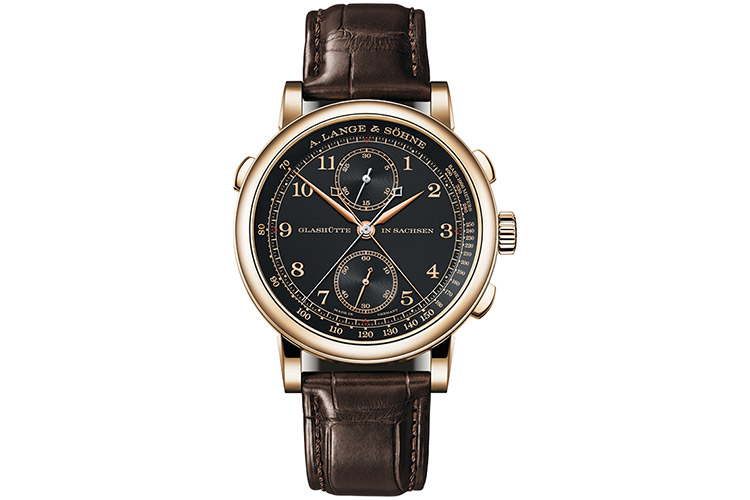
The complex chronograph/rattrapante mechanism is located on the movement side of the new L101.2 manually wound calibre. The control of elapsed or lap-time measurements is handled highly precisely in the classic manner with two column wheels. Like the rattrapante clamp that blocks the rattrapante hand in the lap-time display mode, it is visible through the sapphire-crystal caseback. This allows the precise switching processes to be observed in detail. When fully wound, the mainspring barrel delivers a power reserve of 58 hours. In connection with the screw balance, also manufactured in-house, the freely oscillating Lange balance spring guarantees excellent rate accuracy at a frequency of 21,600 semi-oscillations per hour.
Tourbograph Perpetual Honeygold
Only 50 pieces of the most complex timepiece of the new anniversary edition – the Tourbograph Perpetual Honeygold – will be made. The timepiece is a combination of a fusée-and-chain transmission, a tourbillon, a rattrapante chronograph and a perpetual calendar – first realised in 2017 – and a novel dial, and exclusive movement finissage. Two of its five complications – the tourbillon and fusée-and-chain transmission – have the single purpose of further increasing the accuracy of the watch. Orchestrating the perfect interaction between chronograph, rattrapante and perpetual calendar is a major watchmaking challenge. The addition of a perpetual calendar required more than 200 extra parts, dramatically changing the power flows in the movement and requiring a new design concept.

With analogue displays, the perpetual calendar indicates all month durations correctly until 2100. After a one-time correction, the calendar is then properly calibrated for the next century. It has three subsidiary dials. The date at twelve o’clock and the day at nine o’clock are indicated with honey-gold hands. The month and leap year are both displayed at three o’clock. The upper half of the analogue date accommodates the moon-phase display, which is calculated at an accuracy of 122.6 years.
The top-mounted rattrapante (or split-seconds) hand in blued steel can be stopped independently of the gold-plated chronograph hand and also resynchronised with it via the pusher at ten o’clock. This allows any number of lap times to be stopped during a running time measurement. The mechanical switching processes are controlled with two column wheels and can be observed in real time through the sapphire-crystal caseback. The 30-minute-counter at nine o’clock completes the repertoire of chronograph displays.
For the dial arrangement, A. Lange & Söhne took a completely new approach: it is made of black-rhodiumed honey gold with raised numerals and scales that stand out from the dark background as a ground relief.
